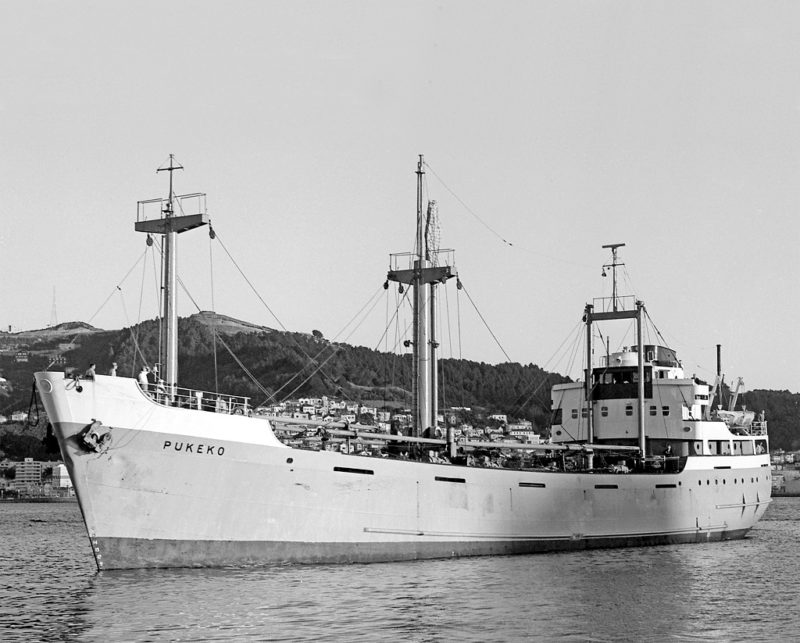
Reflecting on a bygone era, a time when there were some appealing little coasters that plied around New Zealand waters, which I frequently encountered during 1960-1980s, not to mention the delightful small, short sea traders operated by the Union Company, which could be seen at any NZ port on any day of the week. For an old mariner like me it is sad that these dainty little ships are no longer to be seen and have faded into the fogs and echoes of nostalgia.
If my memory serves me correctly, there were, a number of New Zealand shipping concerns that operated short sea traders and coastal vessels, some of which I remember, but many were absorbed into, or taken over, by the Union Company which eventually replaced many of them with their own ships.
What has motivated me to pen this article on classic New Zealand Coasters, was the fact that during my surfing of the web I stumbled across the old New Zealand coaster Manuia after some theatrical film props and mods, intended to transform her into the SS Venture for use as the ship in the 2004 Hollywood Block Buster movie King Kong.
The Manuia, 492 grt, was built in Holland by Scheepswrvwn Gebr, Niestern, Delfzijl, for Swedish owners and named My Puck having launched as Auriga. Between 1960-1989 she had a colourful career, changing ownership many times before finally finding her way to the Pacific in 1990 when she was purchased by Manuia Shipping Ltd., and registered in the Cook Islands. Following a period of layup, she was again sold to Windomere Shipping Ltd., who re-engined her prior to returning her to layup. Eventually she was purchased by Petromont Fishing Company of Auckland who used her as a Tuna fishing vessel until 2003 when she again returned to NZ for temporary layup before being sold in 2004, to become a film star.
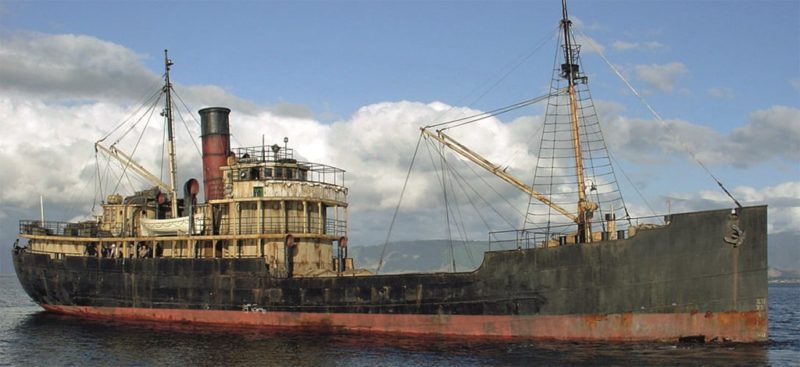
The ship was sold by the film company but just lay idle at Wellington until the Harbor Master declared the Manuia to be a marine hazard and in danger of sinking at the wharf. There were plans for the vessel to be sunk in shallow water to be used as a diver attraction, but the project was shelved, and it was eventually decided to scuttle the vessel in the deeper waters of the Cook Straits.
She had a temporary reconstructed bow, elongated funnel, refashioned bridge housing and imaginative paint work, to give the impression of a decrepit run-down tramp ship of the 1920s. She departed from Wellington on 7th March 2005, intending to partake in a two-week stint of filming of her movie role in King Kong.
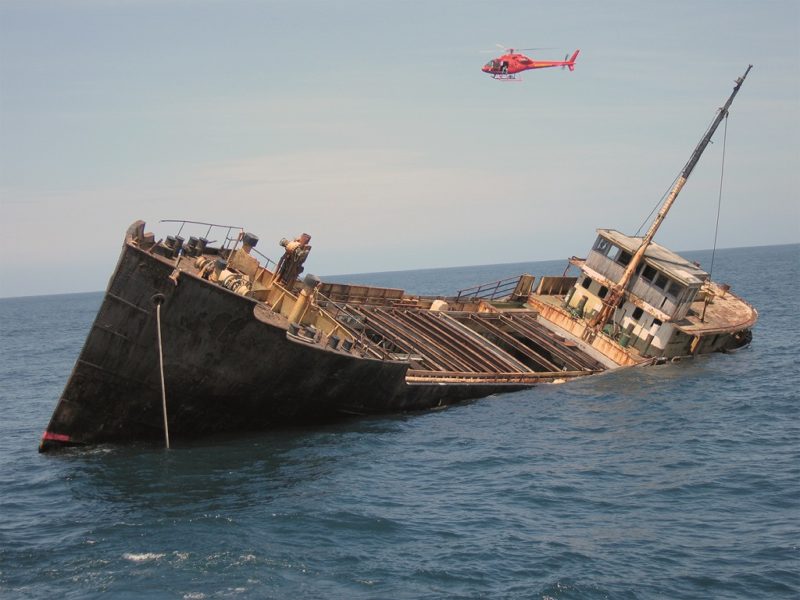
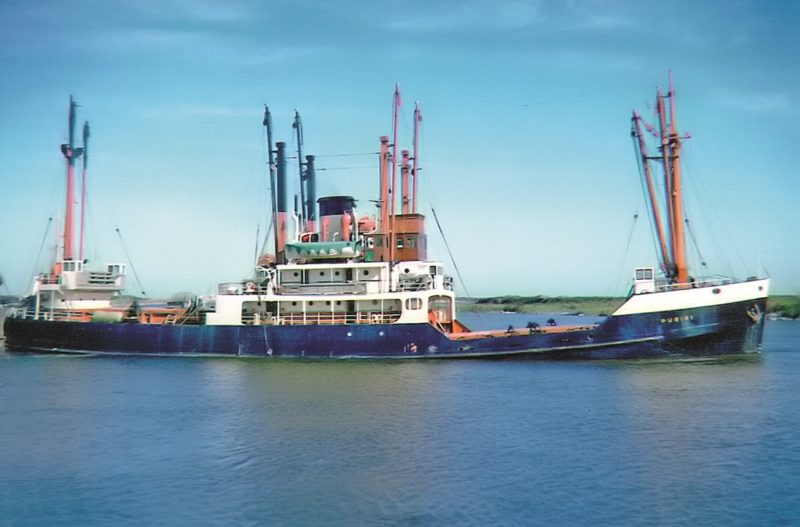
Unfortunately, it was not fully completed as the ship sprung a leak in the bilges, causing the ingress of seawater, when off the Kapiti coast. The crew abandoned the ship and were taken onboard a support vessel which took them ashore. Temporary repairs were carried out at Kapiti Island, and the seawater stripped out. On 27th September 2005, workers commenced removing the props which included the artificially constructed bow, elongated funnel, and deck housings. Work was completed by 5th October 2005. The same year a proposal to scuttle her in the Cook Straits was rejected and the ship was subsequently laid up yet again. After her engines and machinery were removed, she was sold to a property developer who intended to use her as a floating aquarium, but this idea was later placed on hold. As of 2007 the ship was still laid up in Wellington harbour awaiting her imminent demise by dispatch to the watery grave of Davy Jones’ Locker, by means of scuttling which happened on 9th February 2010. The little Manuia was just one of many small iconic ships of the New Zealand coast.
Another ship was the 1,248 grt Puriri of the Anchor Shipping and Foundry Co. Ltd. The Puriri was a fine two hatch short sea trader built in 1948 by Henry Robb & Co. Ltd., Leith. She featured midship accommodation and her main route for the final years of her service was between Nelson and Onehunga. She was later laid up in 1974, at Nelson. During 1974 the Puriri was sold to the Maldives Shipping Corporation of Male, Maldive Islands, and renamed Maldive Pilot. She was sold only one year later in 1975 to Power Shipping (Pte.) Ltd., Singapore and renamed Yellow River. She finally met her demise in December 1979 when sold to breakers at Kaohsiung, signalling the end of a fine little ship.
Another well-known NZ coastal company was the Anchor Shipping and Foundry Co. Ltd., which was incorporated in 1901, from its association and acquisition of other shipping concerns, namely, Nathaniel Edwards and Company (1857-1880) and the Anchor Steamship Company (1880-1901), hence it had one of New Zealand’s oldest shipping lineages. The Union Steamship Company took an undisclosed 50% interest, through use of nominees, in 1908. Her ownership was transferred to the Union Company when they made a full acquisition of Anchor Shipping in 1972. The company traditionally served the Port of Nelson and other west coast ports of the South Island.
Canterbury Steam Shipping Co. Ltd.’s ships were all named after climatic conditions, ie Storm, Calm, Breeze, Squall etc. First established in 1904, primarily to trade between South Island and lower North Island ports. Initial years saw brisk trade and the Union Company eyed the Canterbury Shipping Company as a competitor, so when Canterbury became strapped for cash andneeded to replace ageing tonnage, the USSC seized the opportunity to protect their own interests by taking a confidential 50 % controlling interest in one of its rivals.
The Canterbury Shipping Company was finally wound up as an entity in 1978, after spending the previous 4 years with their administration being transferred to USSC headquarters in Wellington.
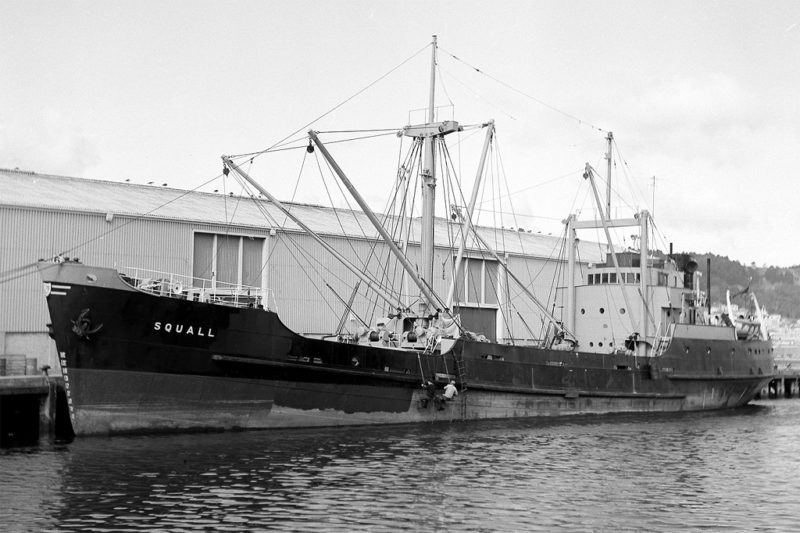
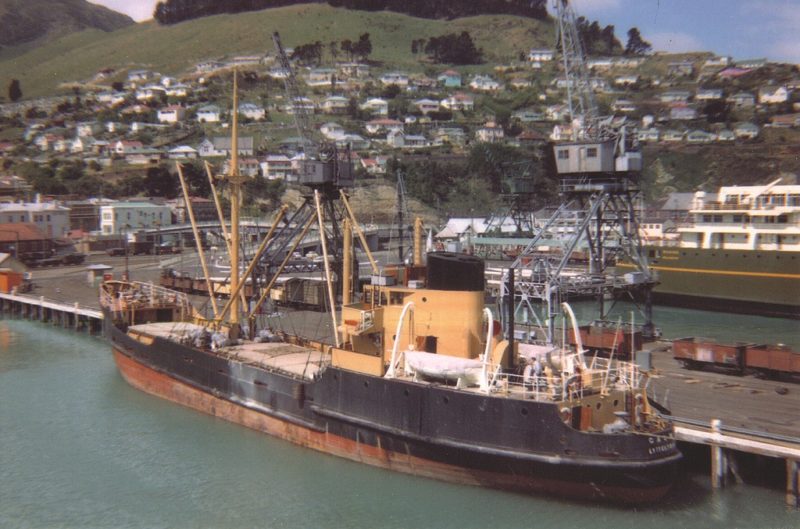
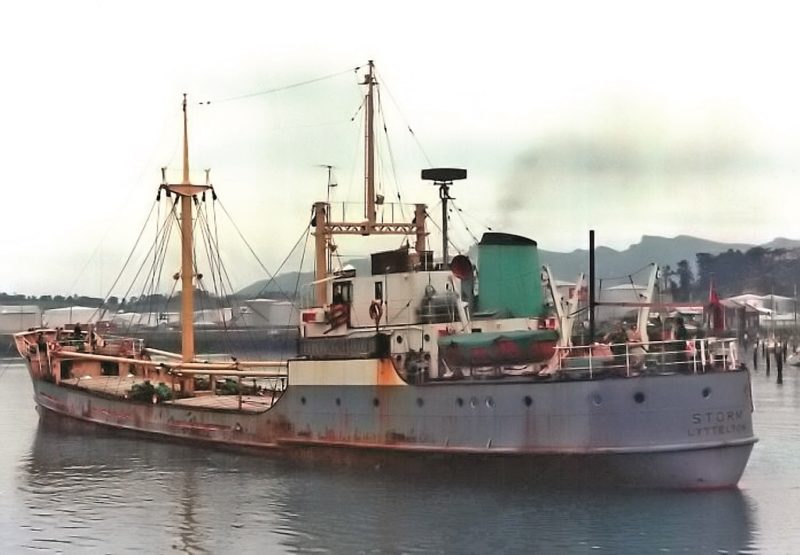
The 787 grt Calm was built in 1950 by Scott and Sons, Bowling on the north bank of the Firth of Clyde. The ship almost came to a premature end in 1956, when she grounded in heavy weather on rocks near Taranaki, due to an important lighthouse used for critical coastal navigation becoming suddenly unlit due to a power failure. She was refloated and taken to New Plymouth for temporary repairs before proceeding to Port Chalmers for permanent repair work.
Despite her name she endured quite a checkered career surviving various incidents. In May 1963 a collision with the trawler Venture in Otago Harbour occurred, causing the temporary stranding of Calm before she was able to proceed to Wanganui. This was followed by a fire in No. 2 hold in a cargo of wool, causing the ship to rapidly divert to Timaru, where her fire damaged cargo was discharged and the fire fully extinguished. In 1969 the Calm was transferred to the Holm Shipping Company Ltd., then, following a period of layup at Nelson, she was sold in 1971 to Singapore company Hai Lee Shipping & Trading Co. Pte. Ltd. and renamed Selamat Detang.
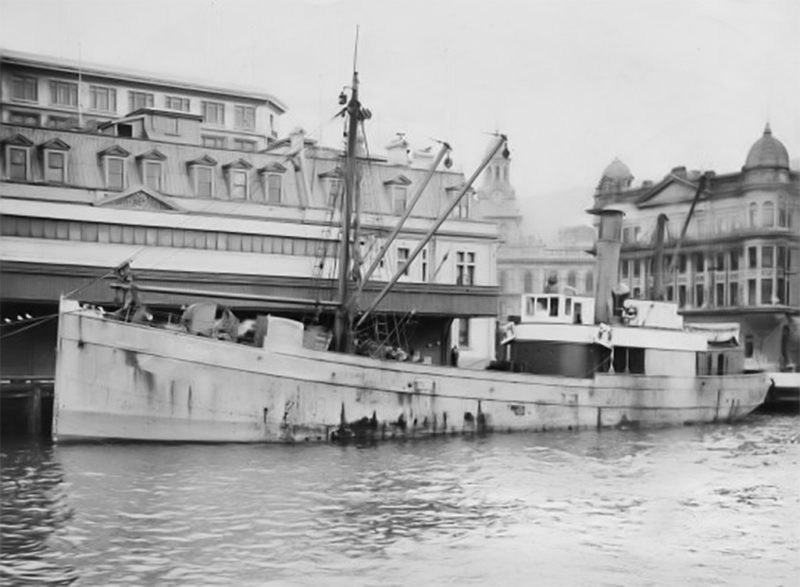
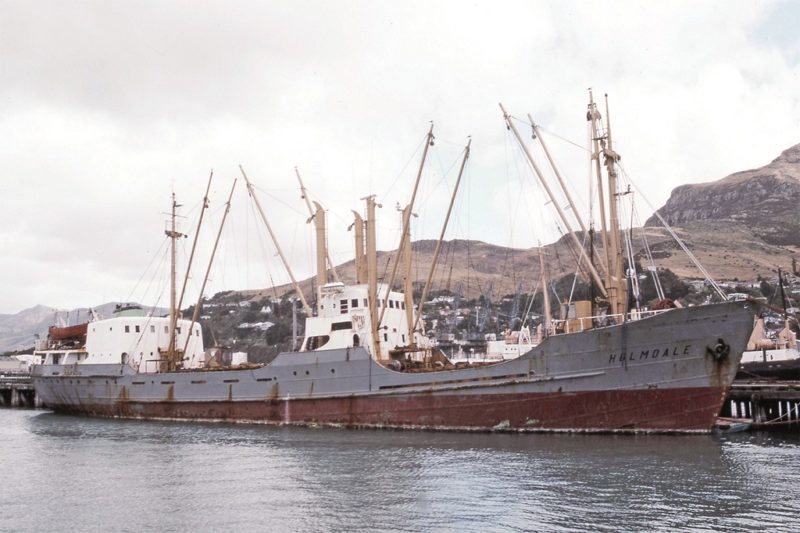
In 1982 she was sold to Tanjong Maritime Co. Ltd., Bangkok and renamed Tanjong Mas and in 1984 she was resold to See Hai Hong Shipping and Trading and renamed See Hai Hong. In 1989 she was renamed Hadyai Union, and in 1990 became Angkor 2. Finally in July 1990 the vessel sprung a leak in the South China Sea near the Paracel Islands and subsequently sank. All crew were rescued.
Built in 1961 by Scotts and Sons, Bowling, Scotland for the Canterbury Steam Shipping Co. Ltd., the 931 grt Storm remained in New Zealand waters until 1975 when sold to Crossworld Management of Hong Kong and renamed Surabaya Fortune. In 1977 she was sold to Pacific International Lines of Singapore and renamed Kota Perwira. In 1985 she was sold to Sabah interests and renamed Perwira. In 1986 she was arrested when at Madras, under the name of Thai Hong, allegedly for smuggling gold bars and other contraband. She was sold at an Admiralty Auction at Madras during 1986. In September 1987 she sprung a leak whilst in Madras harbour and partially foundered but was declared a Constructive Total Loss. She was subsequently sold to Indian breakers at Madras in May 1988.
Another noteworthy operator of fine little ships on the New Zealand coast was the Holm Shipping Company Ltd. It was founded in 1911 when Captain Ferdinand Holm purchased a small steamship, the 342 grt John which was built in 1899 by Turnbulls at Whitby. She survived until May 1937 when she was broken up at Wellington.
However, it was not until 1926 the company, Holm Shipping Company Ltd. was formally registered. Up until 1926 all the ships owned were under single ship entities, and it was not until Holm Shipping was incorporated, did they start to follow the name convention of the Holm prefix and were all merged into the Holm fleet. Due to the owner’s continental and Nordic background, the company favoured Dutch built coasters and purchased their ships mainly from that source.


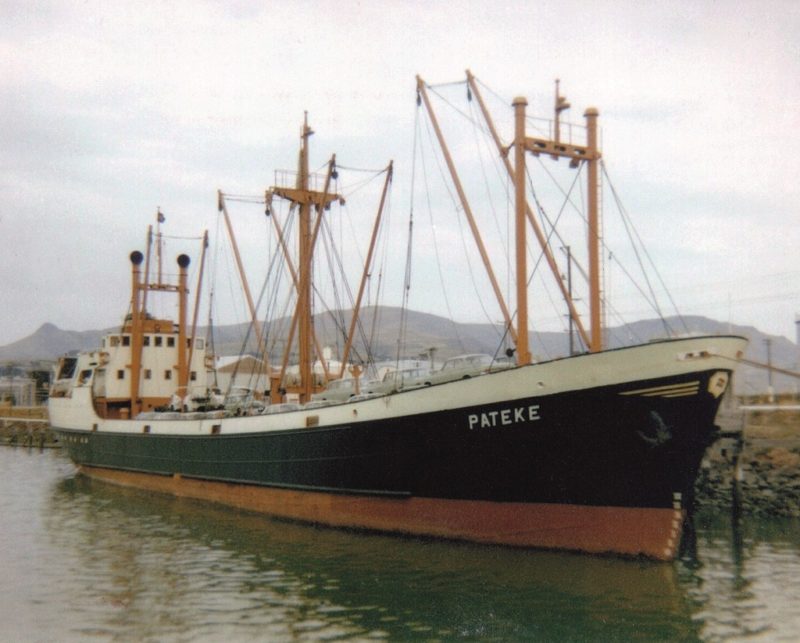
Like many other owners, the Great Depression of the 1930s took their toll but the Union Company came to the rescue by taking a controlling interest in the company. Obviously, there was a degree of self interest in the acquisition by the USSC, as once again, Holm Shipping was deemed a competitor.
The oldest shipping firm in New Zealand was Richardson and Company Ltd., which had long rooted origins dating back to 1859. It lasted until 1975 when their last ship was sold. The company was finally liquidated in 1978, when traditional coasting no longer turned a profit for small independent owners, most of which had by this time been taken over by USSC, who introduced more modern and economic tonnage.
The Richardson and Company’s 1,020 grt Pukeko was transferred to Holm Shipping’s management in 1972. In 1975 she was sold to Crossworld Management & Brokerage Ltd. of Singapore and renamed Sirdhana Fortune. In 1977 she was transferred to Crossworld Fortune Shipping Co. Ltd. also of Singapore.
In 1982 she was sold to Almoouaket Shipping & Trading of Kuwait and renamed Almoussa. In 1987 she was sold to Delta Maritime Co. of Suez and renamed Almoussa D. In October 1988 she caught fire, was abandoned and sank in the Red Sea at position 14º07’N, 42º50’E.
Another classic ex Dutchman was the 785 grt Pateke, built in 1954 by J. Bodewes Sheepswerf at Hoogezand, Netherlands for Richardson and Company of Napier. She remained with the company until 1972 when she was sold to PIL (Singapore) and renamed Kota Gembira. By this time Richardsons was a subsidiary of the USSC. In 1982 she was sold to Malaysian Shipping Corporation and was renamed Kota Intan. In 1982 she joined Syarikat Perkapalan Pacific Utara Sdn Bhd and was renamed Gembira II. In 1983 the ship arrived in Bangkok, where she was laid up due to frequent machinery breakdowns. She was ultimately sold for demolition in Johore Bahru.
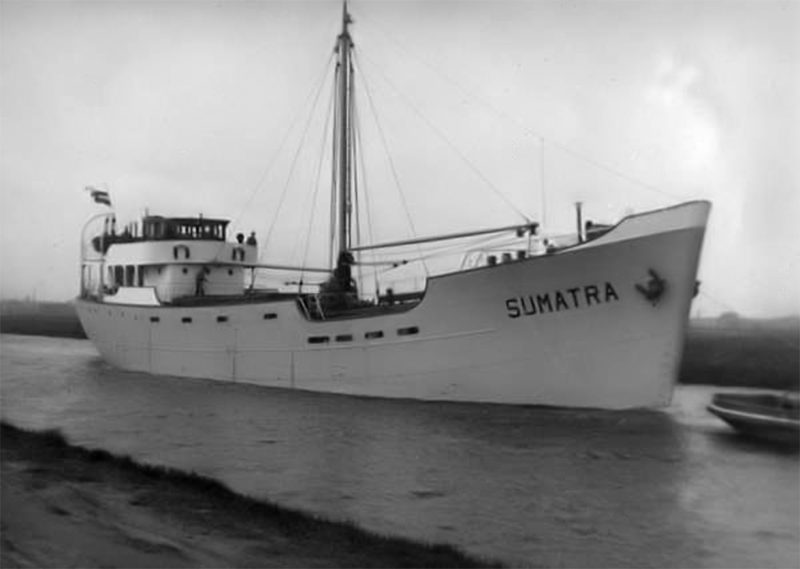
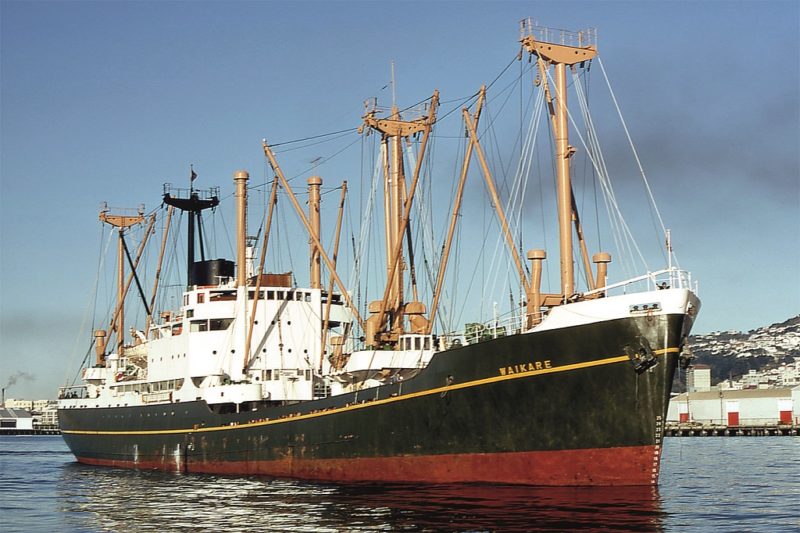
Just one of many Dutch built coasters that found its way to New Zealand was the 342 grt Sumatra, built by Vooruitgang at Foxhol, Netherlands in 1938 for W. J. Kramer of Groningen.
In 1951 she was sold to Gebr. van Diepen, Waterhuizen and in 1952 she was sold to Express NV, Delfzijl. In 1953 she relocated to the Pacific and was purchased by Cement Freighters Ltd. of New Zealand and used in the bagged cement trade between Portland and Auckland, until replaced by more modern purpose-built tonnage in 1960.
In 1961 she was purchased by Hobart Transport Commission. In 1969 ownership was transferred to Pen Pak Distribution of Hobart. On 15th September 1976 she was scuttled off Cairns, Queensland.
By far the largest operator of coastal and Short Sea Trade tonnage was the Union Steamship Co. Ltd. of New Zealand (USSC). Their ships mainly followed a unique design and were always easily recognizable, apart from their striking dark green hulls and red and black funnels, which was their trademark.
The Union Steam Ship Company (USSC) was formed in Dunedin in 1875, funded by a combination of New Zealand and Scottish financiers. By the end of the 1970s USSC had become the dominating and most influential ship company in New Zealand.
In 1890 the company took over the Tasmanian Steam Navigation Co. It also introduced mail liner services to Vancouver and San Francisco, the Pacific Islands as well as a minor service to the United Kingdom.
By the outbreak of WW1 in 1914 the tonnage operated by the USSC’s fleet had grown to 75 vessels, the biggest shipping line in the southern hemisphere and New Zealand’s largest private-sector employer.
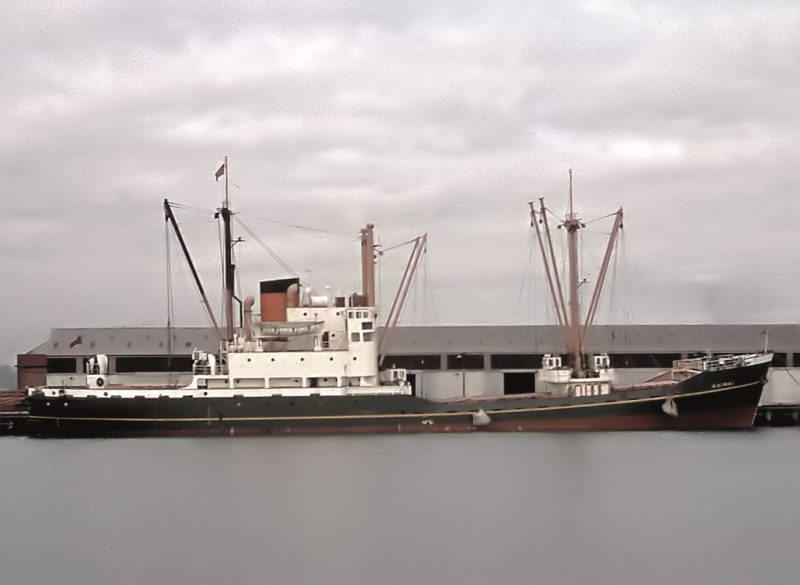

The company’s market dominance earned it the nickname the ‘Southern Octopus’. Union Steam Ship had a near-monopoly on trans-Tasman shipping through its policy of progressively acquiring other independent trans-Tasman and coastal shipping businesses, including Anchor Line, Canterbury Steam Ship Company, Richardson and Company, and Holm shipping Company.
The USSC was sold to the British shipping giant P&O in 1917. They returned to joint Australian and New Zealand ownership in 1972 when the company was sold by P&O to Thomas Nationwide Transport (TNT) which had a substantial road transport interests in New Zealand. With New Zealand investors TNT bought USSC from P. & O. in 1971 but struggled financially throughout the 1990s. In 2000 the iconic 125 year-old Union Steam Ship Company, was placed into liquidation.
The USSC’s 3,839 grt Waikare, another vessel following the typical USSC design. She was used mainly on the South Island to Melbourne trans-Tasman service. Built in 1958 for the USSC by Alexander Stephen & Sons Ltd. at Linthouse, Glasgow. The ship remained with the company until 1975 when sold to Maldive Shipping Ltd. and was renamed Maldive Sailor. In 1977 she was in a collision with the tanker Japan Daisy off Cape Comorin and was abandoned, sinking in position 8°24’N, 76°42’E whilst on a passage from Karachi to Colombo.
The slight differently designed 2,007 grt Kaimai built 1956 by Henry Robb and Company at Leith, for the USSC. In 1972 she became Meladju of Lineing Enterprises SA of Panama and in 1980 she joined Walek Sdn Bhd of Malaysia as Kita. In 1985 she became Sanua and in 1987, Paisi of Paisi Shipping SA of Honduras. She was broken up at Rayong in June 1987.
The USSC 1,952 grt, 1955 built Navua was of a similar design, which differed slightly from that of their more proven traditional design. She was also built by Henry Robb at Leith. In 1971 she joined Guan Guan Shipping Pte. Ltd. of Singapore and was renamed King Horse. In 1985 she moved to Honduras company Nan Wah Enterprises and was renamed Kin Horse I. She was broken up at Fujian, China in 1985.
Obviously, there are many more iconic little ships that graced the waters of New Zealand during the heyday of coastal shipping, far too many to highlight in this short narrative, but I trust the ones I have selected stimulate fond nostalgic memories.
One of the last was Anchor Line’s 927 grt Mamaku. She was built by Henry Robb at Leith in 1949. She was engaged mainly on the Nelson, Motueka to Onehunga service but also carried coal from West Coast to North Island ports.
In 1972 she traded mostly around the Solomon Islands for the Pacific Islands Shipping Company. In 1973 she was sold to Hiap Seng of Singapore and renamed Mamani and in 1979 she was sold to Thai interests Kean Lee Latham, and renamed Thani. In 1982 she was renamed Hai Soon Kao and in 1986 she became Haydai Union 2 before being broken up in Thailand the following year. She was a close sister vessel to the Puriri.

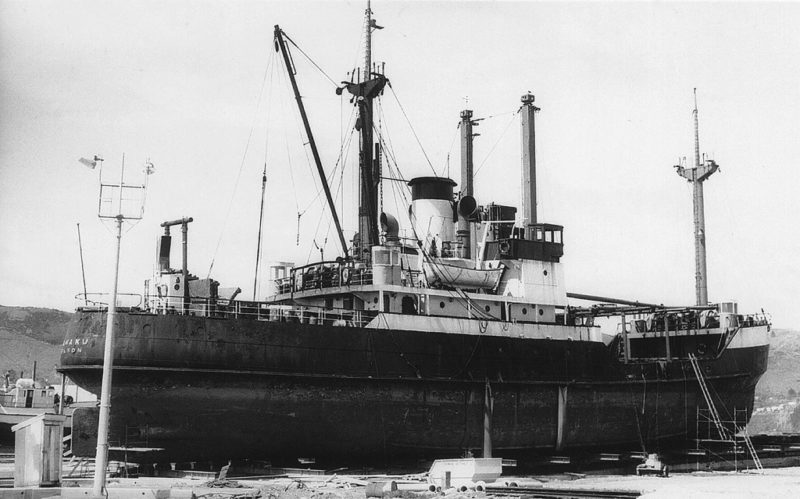



Comments
Sorry, comments are closed for this item